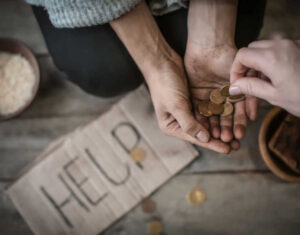Who Is the Guinea Pig Hitting the Green Energy Wall?
Despite abundant natural resources, beautiful scenery and nice weather, South Africa, by most measures, is a failed state. SA is also one of the wealthiest countries in the Sub-Saharan Africa. But as Francis Manton points out, that’s not saying much.
The World Bank gives its per capita GDP as about $7000 for 2021. (For comparison, the U.S. per capita GDP is around $70,000. while wealthier European countries like Germany, the UK and France have per capita GDP in the range of about $40,000 – $50,000.).
As various U.S. states and foreign countries “press forward” on their crash programs to go fully “green” with their electricity generation, The Manhattan Contrarian asks three obvious questions:
- Who will be first to hit the green energy “wall”?
- Which state or country will be the first to find that without enough reliable generation its electricity system no longer works?
- How will that impact the population?
In previous posts, Francis Menton has examined the progress toward energy disaster of various wealthy jurisdictions that have embarked on this supposed transition to renewable electricity. For example a previous post, asks, “Which Country Or U.S. State Will Be The First To Hit The Renewable Energy Wall?” That post focused on California and Germany.
In a 15 March 2023 post, “Countdown To New York’s Rendezvous With Energy Impossibility,” New York was a candidate for the first to hit the wall.
Where’s the Reliable Baseload Power
South Africa needs reliable baseload power, not windmills and batteries. Unlike wealthy Western countries, explains Mr. Menton, SA is not fully developed. For example, SA has never achieved a fully built out electrical grid.
The country has a legacy electricity infrastructure, almost entirely based on coal generation, dating from prior to the accession to power of the ANC in 1994. But South Africa needs a big increase in its electricity supply to become a fully-developed economy. Its population has grown rapidly (from about 43 million in 1994 to 60 million today).
Meanwhile its electric utility, Eskom, is heavily indebted with little further ability to raise private capital. Thus the country substantially relies on Western aid to support and expand its supply of electricity. As an example of what is occurring in the realm of Western aid for electricity infrastructure, the World Bank stopped financing coal power plants in 2013 and stopped financing oil and gas extraction projects in 2017.
South Africa – a Willing Guinea Pig
In the short story “Pigs Is Pigs” by Ellis Parker Butler, readers are told a tale of bureaucratic incompetence. Sound familiar?
According to reporting from the NYT, over the past decade +, since the wind/solar fad took hold, South Africa’s coal power plants have become “dilapidated” due to poor maintenance and disinvestment. Meanwhile, writes Mr. Menton, the focus as far back as the turn of the century has moved to developing wind and solar resources to provide electricity. Mr. Menton offers a length list on his website of wind as well as solar projects subsequently completed in South Africa.
Surely, after viewing the two lengthy lists, you must be thinking, by now the wind and sun must be providing the abundant and nearly-free electricity for all? “Hardly.” After all that effort, the wind generation is up to a full 2% of South Africa’s electricity, and solar is up 1%.
According to CNN, any individual home or business is getting hit with about 12 hours a day without power, generally coming in increments of about 4 hours at a time, and often without notice. It’s disgusting to watch what the self-important international functionaries are doing to this poor country. But at least we’re learning what the green energy “wall” looks like in practice.
Funny how all that “free” electricity and near-daily blackouts don’t lead to rapidly increasing per capita GDP. Instead, it’s the further impoverishment of already-poor people.






